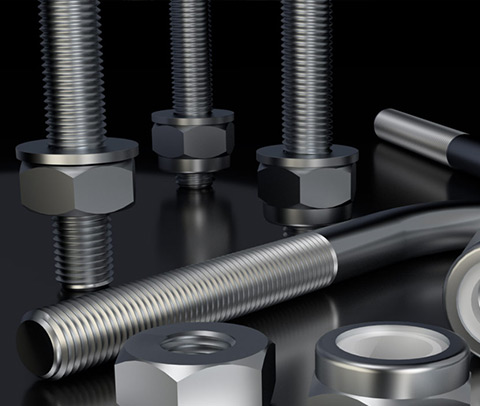The cold heading process is a metal forming method that can be used to create various fastener products such as rivets, nuts and bolts. It is a simple and inexpensive process that can be used to assemble products for various applications and is widely used in the fastener industry.
Typical materials for cold heading are low carbon steels with hardnesses in the range 75 HRB to 87 HRB and medium carbon steels containing 0.2 to 0.45 % carbon. The ability to cold form these materials varies depending on their carbon and manganese content. The harder the material, the more difficult it is to cold head.Some steels can be directly used for cold heading without heat-treating. These steels are particularly suitable for slender long fasteners because the straightening deformation is not required, thus reducing production costs.

The use of non-heat-treated wire rods for cold heading has increased rapidly for a number of reasons, including environmental advantages and energy savings. These non-heat-treated wire rods can be quenched and tempered without the need to undergo heat-treating; they provide the same flow stress properties as spheroidized steel.The spheroidizing annealing of wire rod is an important step in the cold heading process. It is used to reduce the hardness of the work piece, thereby increasing its deformation potential and improving the mechanical properties of the fastener.The spheroidized steel has a multi-phase microstructure that is favorable for cold heading applications. It consists of fine dispersed cementites and coarse ferrite grains. It is also characterized by high ductility and good workability.
Cold heading wire rods are high-quality steel rods that are used in various applications, including fasteners, automotive parts, and construction materials. The process of making cold heading wire rods typically involves the following steps:Steelmaking: The first step is to make steel by melting iron ore, scrap steel, and other materials in a blast furnace. The molten steel is then refined in a secondary process to remove impurities and adjust the chemical composition to meet specific requirements.Casting: The molten steel is then poured into a mold to create a billet or a slab. The billet or slab is then hot rolled to reduce its thickness and increase its length.Cold drawing: The hot-rolled steel is then cold drawn to further reduce its size and improve its surface finish. This process involves pulling the steel through a series of dies that gradually reduce its diameter.
Annealing: After cold drawing, the steel is annealed to improve its ductility and toughness. Annealing involves heating the steel to a specific temperature and holding it at that temperature for a specific time, then cooling it slowly to room temperature.Cleaning and coating: The wire rod is then cleaned to remove any surface contaminants and coated with a lubricant to improve its formability and prevent corrosion.Cold heading: The final step is cold heading, which involves forming the wire rod into the desired shape using a cold forming process. The wire is placed into a die and struck with a hammer or press to deform it into the desired shape.Once the wire rod has been cold headed into the desired shape, it is usually heat treated to improve its mechanical properties and then finished by cutting, threading, or other machining processes.

